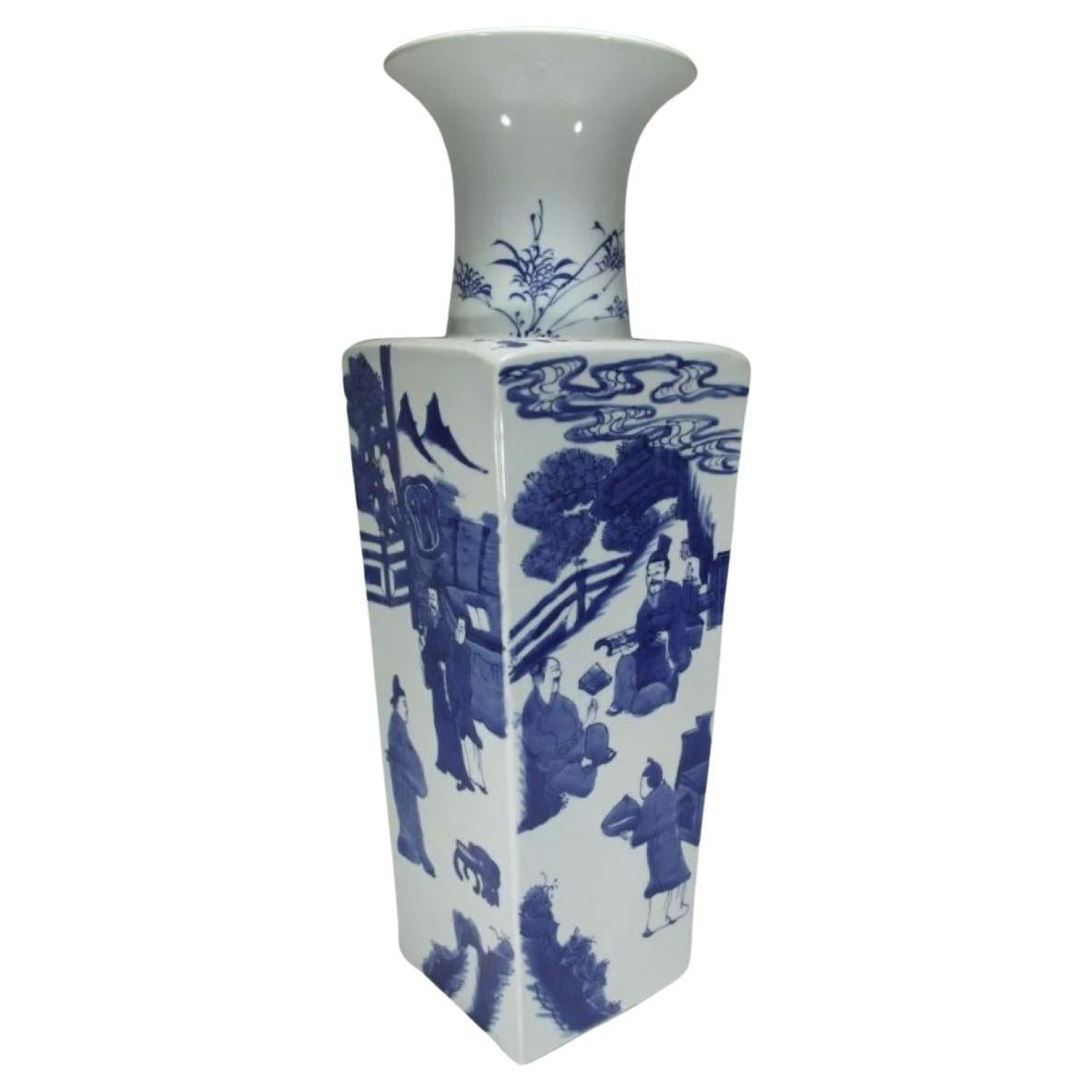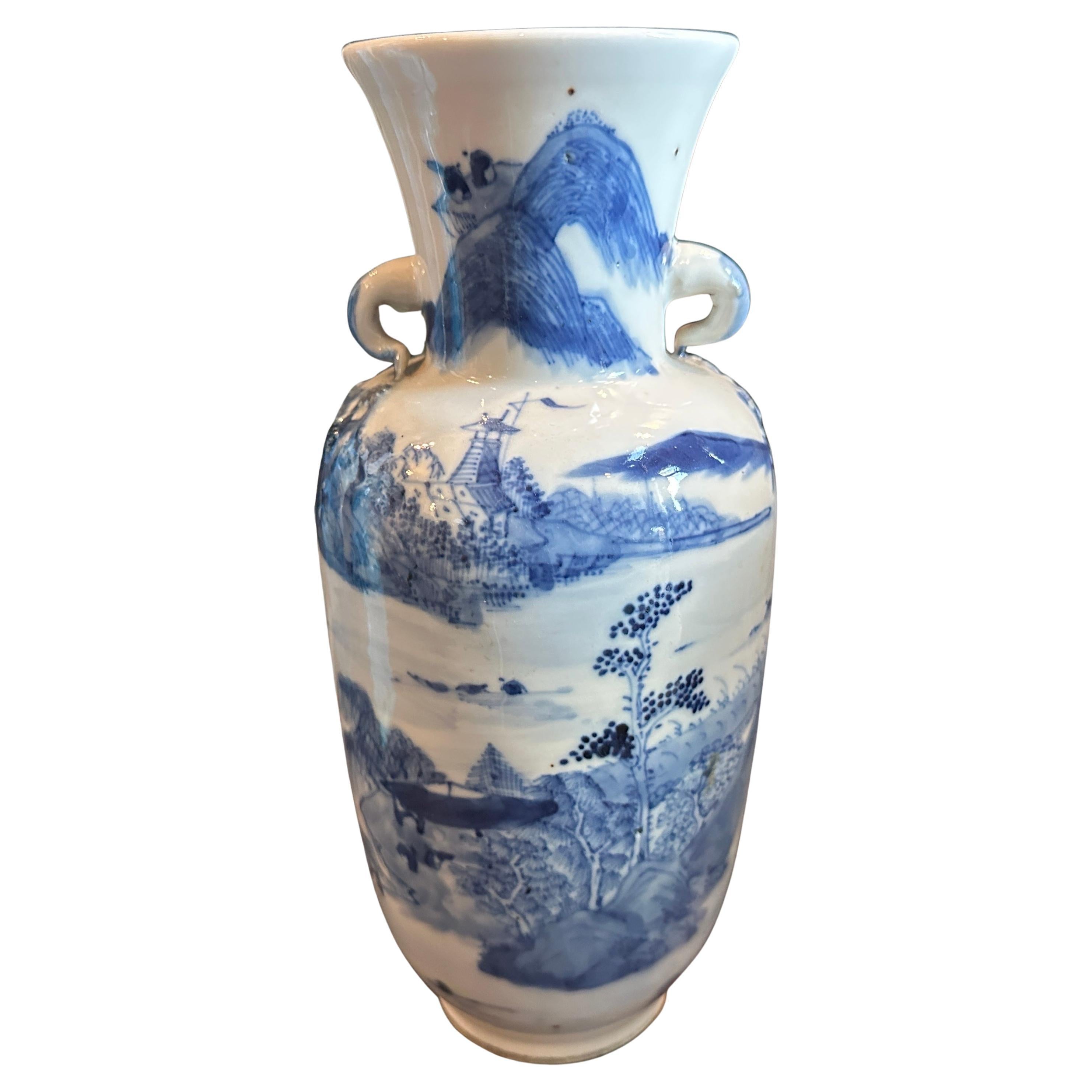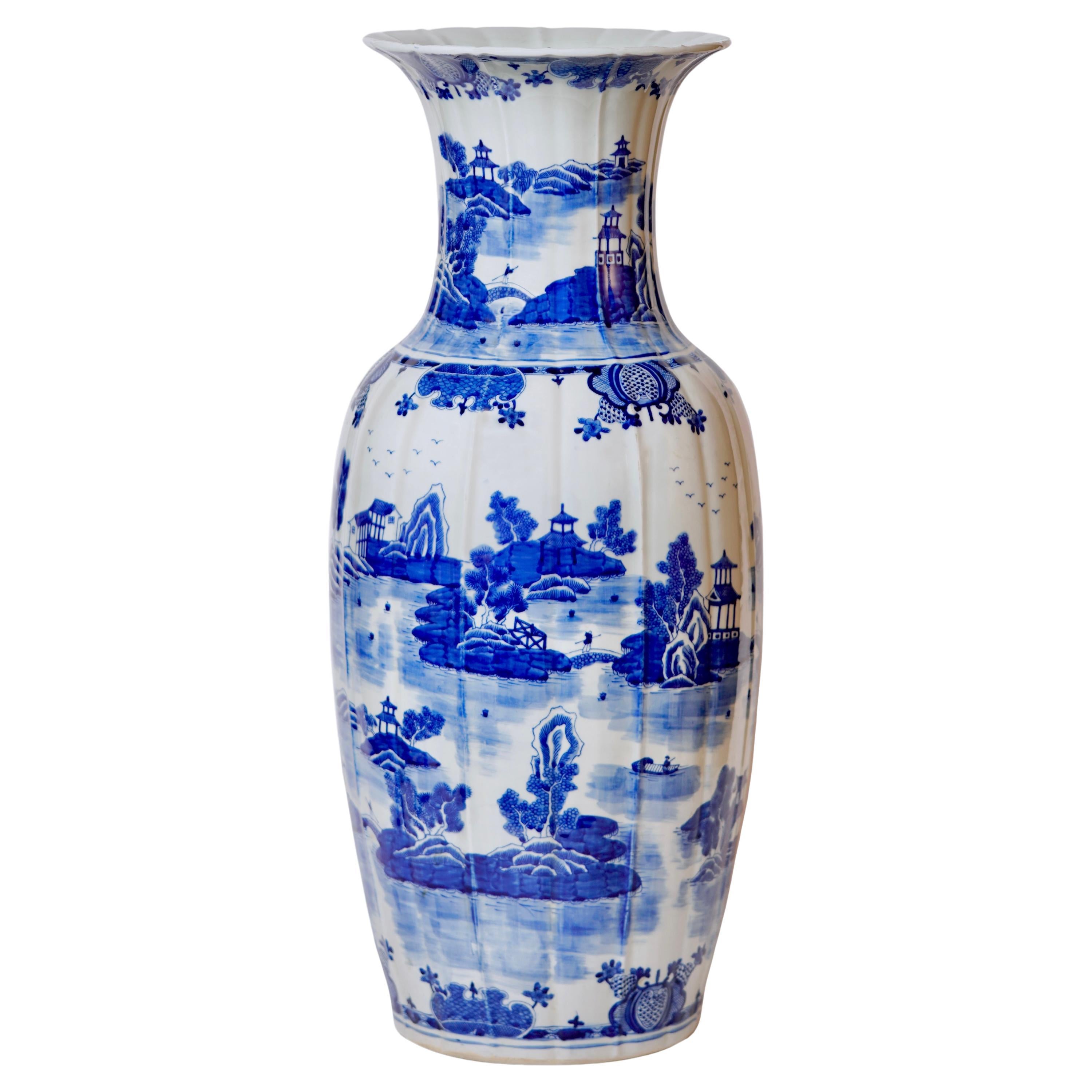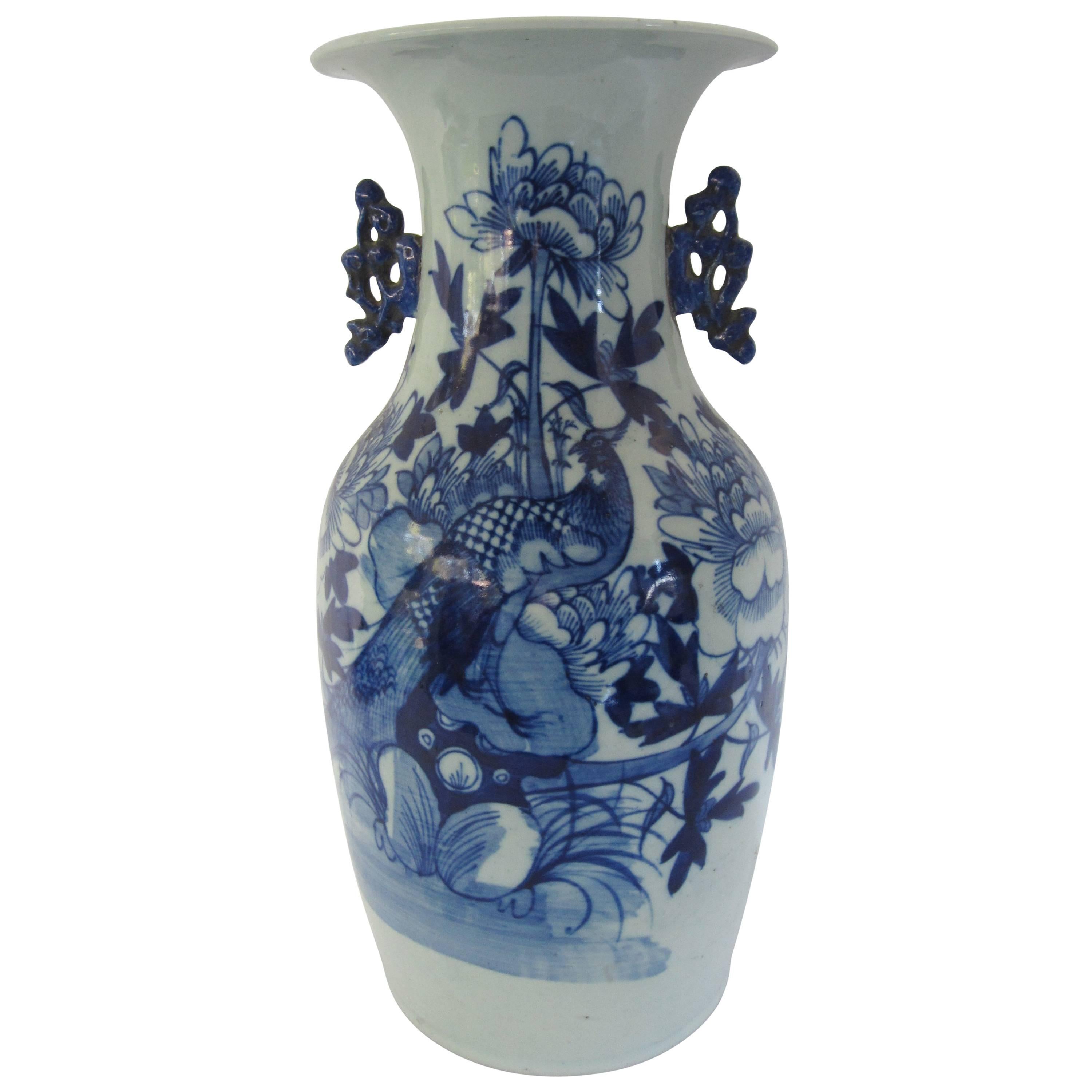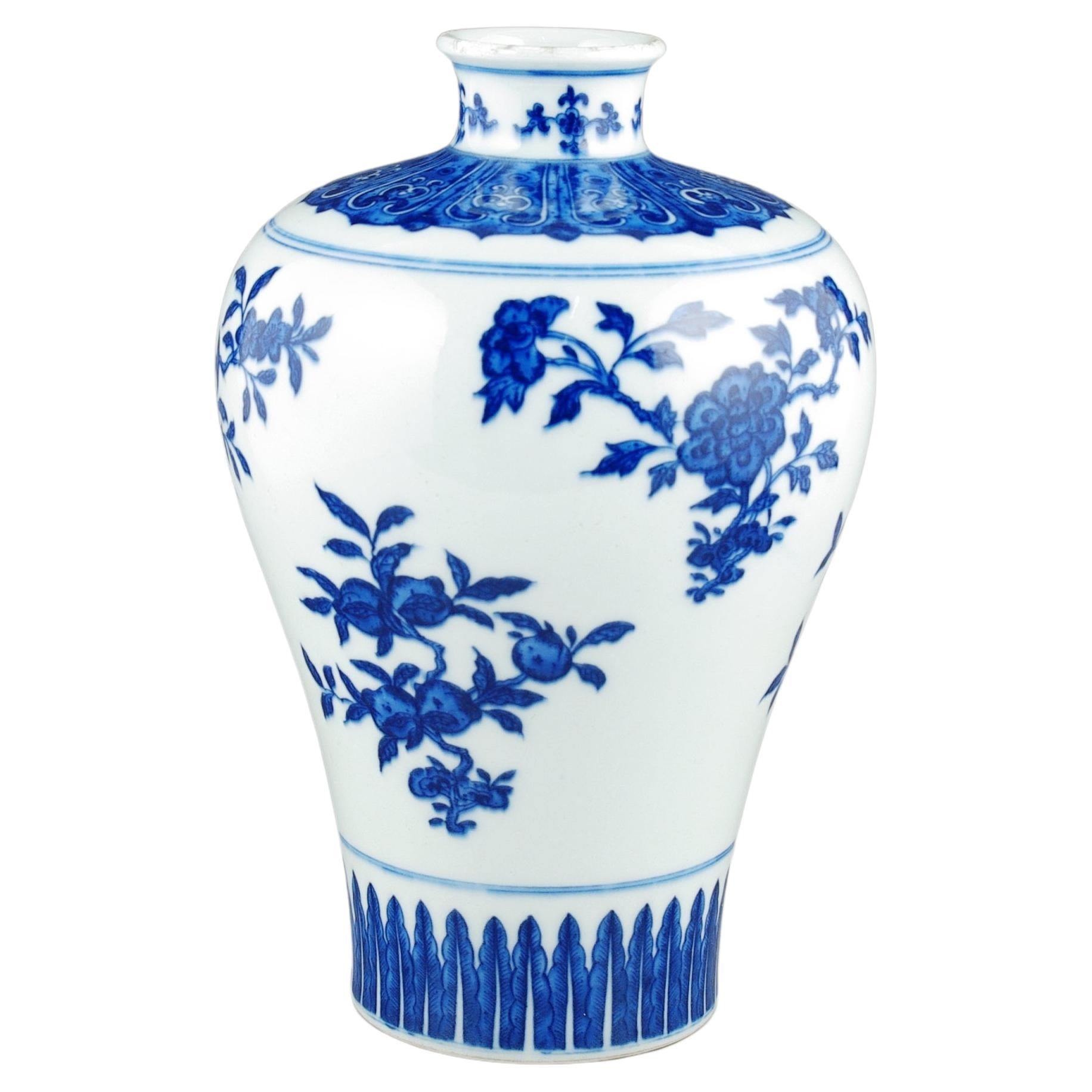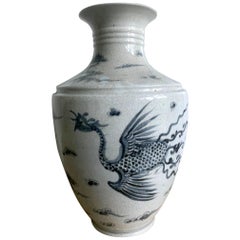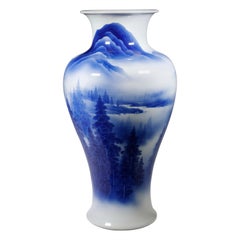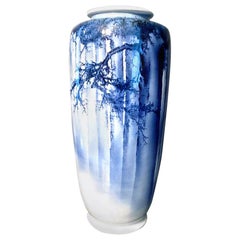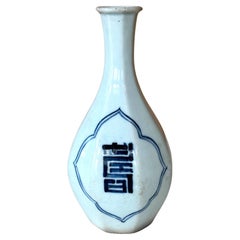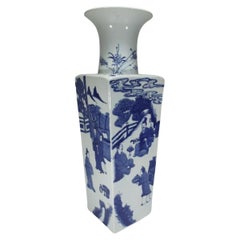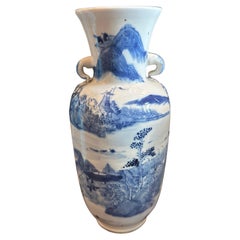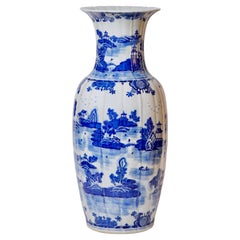Items Similar to Chinese Blue and White Porcelain Vase from Modern Official Kiln
Want more images or videos?
Request additional images or videos from the seller
1 of 18
Chinese Blue and White Porcelain Vase from Modern Official Kiln
$6,000
£4,587.32
€5,283.67
CA$8,407.84
A$9,386.56
CHF 4,918.42
MX$114,900.74
NOK 62,463.95
SEK 58,895.58
DKK 39,432.54
About the Item
Dubbed as production of the "Chinese Modern Official Kiln", a small group of porcelains of the highest standard were produced in Jingdezhen from 1962-1967, The production was aimed as a revival of the Chinese porcelain after the foundation of the Republic in 1949 in order to serve the purpose of decorating the meeting halls for the newly renewed diplomatic relations around the globe. The best available materials and artists, including the painters and potters, were employed to achieve a high quality that rivaled the pieces produced during the pinnacle years in the porcelain production in the previous Qing dynasty. Due to the breakout of the Cultural Revolution, most of the pieces failed to be used as intended. Most if not all signatures, such as found on this vase, were added later as a hallmark to distinguish them. "Zhong Nai Hai Huai Ren Tang Treasures Porcelain Research Bureau year of 1962". Zhong Nai Hai is the residential and working compound for Chinese political elites in Beijing and Huai Ren Hall being an important meeting hall.
The pieces from "Modern Official Kiln" ubiquitously showcase perfectly balanced forms with precision in symmetry. The use of very high quality Gaolin clay resulted in a semi translucent body, often quite thinly potted. The superbly underglaze paint were sandwiched between a pre-applied glaze and then an overglaze, and the elaborate designs were drawn by master painters. Often, there is a hidden red Chinese National Emblem on the interior wall. These features were all well reflected in this piece. The decoration of the blue paint on the vase is of a classic regal composition and the cobalt blue is of a vivid radiating color. Blooming peonies, an old laurel tree with blossom and scholar rocks provide the background and anchor for a pair of pheasants. One raises its head to crow while the other one looks down. These motifs are commonly found in classic Chinese scroll paintings, a genre called "Flower and Bird Painting". On the back of the vase, there are Chairman Mao's head portrait watermarked in the glaze as well as a cursive poem with a collection number as shown.
For a pair of blue and white vase of the same production, see sale by Singapore International Auction PTE ltd on July 21st, 2019 lot 2014.
For a pair of blue and white urns with nearly identical design, see sale by Beijing ZhongPai International Auction on Jan 20th, 2007 lot 230 (last image).
- Dimensions:Height: 18.25 in (46.36 cm)Diameter: 7.25 in (18.42 cm)
- Style:Modern (Of the Period)
- Materials and Techniques:
- Place of Origin:
- Period:
- Date of Manufacture:1962
- Condition:Wear consistent with age and use. There is a long vertical crackle on the back along the watermark Mao's portrait and poem as shown. A couple of nicks on the base rim as shown.
- Seller Location:Atlanta, GA
- Reference Number:1stDibs: LU945023588482
About the Seller
4.9
Platinum Seller
Premium sellers with a 4.7+ rating and 24-hour response times
Established in 2006
1stDibs seller since 2010
565 sales on 1stDibs
Typical response time: <1 hour
- ShippingRetrieving quote...Shipping from: Atlanta, GA
- Return Policy
Authenticity Guarantee
In the unlikely event there’s an issue with an item’s authenticity, contact us within 1 year for a full refund. DetailsMoney-Back Guarantee
If your item is not as described, is damaged in transit, or does not arrive, contact us within 7 days for a full refund. Details24-Hour Cancellation
You have a 24-hour grace period in which to reconsider your purchase, with no questions asked.Vetted Professional Sellers
Our world-class sellers must adhere to strict standards for service and quality, maintaining the integrity of our listings.Price-Match Guarantee
If you find that a seller listed the same item for a lower price elsewhere, we’ll match it.Trusted Global Delivery
Our best-in-class carrier network provides specialized shipping options worldwide, including custom delivery.More From This Seller
View AllLarge Korean Blue and White Vase with Phoenix Design
Located in Atlanta, GA
A large and heavy Korean ceramic vase in a Classic Chinese form with open mouth with a wide flared rim, a neck with three concentric grooves and a sloped broad shoulder. The blue and white design features two underglazed phoenix...
Category
Early 20th Century Korean Archaistic Ceramics
Materials
Ceramic
Rare and Large Japanese Porcelain Vase Makuzu Kozan
By Makuzu Kozan
Located in Atlanta, GA
A striking blue and white vase from the studio of Japanese Potter Makuzu Kozan, also known as Miyagawa Kozan (1842–1916), one of the most established and collected ceramist from Meiji Period. Born as Miyagawa Toranosuke, Kozan established his pottery studio in Yokohama around 1870s and later became one of the appointed artist to the Japanese Imperial household. His work was exhibited in many international fairs that the Meiji government participated at the turn of the century and won many grand prizes.
With an impressively large size, this vase was likely made and reserved as a presentation piece for one of the many expositions the studio participated in the early 20th century. It was decorated with underglaze cobalt blue using the novel technique developed by Kozan called Fuki-e (the blow painting), in order to achieve the striking dimensional literary landscape known as "Mountain and Water". Being one of the most creative ceramists, Kozan started experimenting with new chemical colors from the West in the format of his porcelain glaze around 1880s. New colors allowed him to create underglaze designs that appeared bright, smooth and glossy. He even invented his own receipt of cobalt blue to achieve a much brighter yet softer shade, as evident on this vase. To create landscape that is realistic and dimensional, more common in the western paintings, he was inspired by the native Japanese ink painting technique developed around 1900 by Yokoyama Taikan...
Category
Early 20th Century Japanese Japonisme Ceramics
Materials
Porcelain
Large Japanese Blue and White Vase by Mazuku Kozan Meiji Period
By Makuzu Kozan
Located in Atlanta, GA
A striking blue and white vase from the studio of Japanese Potter Makuzu Kozan, also known as Miyagawa Kozan (1842–1916), one of the most established and collected ceramist from Meiji Period. Born as Miyagawa Toranosuke, Kozan established his pottery studio in Yokohama around 1870s and later became one of the appointed artist to the Japanese Imperial household. His work was exhibited in many international fairs that the Meiji government participated at the turn of the century and won many grand prizes.
With a relative large size, this vase is decorated with underglaze cobalt blue using the novel technique developed by Kozan called Fuki-e (the blow painting), in order to achieve the striking dimensional misty winter landscape. The pine trees with upright trunks and down-sweeping branches appear receding into the depth of the mist, forming an visually unending forest. Known as one of the most creative ceramists, around 1880s, Kozan started experimenting with new chemical colors from the West in the format of his porcelain glaze. New colors allowed him to create underglaze design that appeared bright, smooth and glossy. He even invented his own receipt of cobalt blue to achieve a much brighter yet softer shade, as evident on this vase. To create landscape that is realistic and dimensional, more common in the western paintings, he was inspired by the native Japanese ink painting technique developed around 1900 by Yokoyama...
Category
Early 20th Century Japanese Japonisme Ceramics
Materials
Porcelain
Korean Ceramic Faceted Blue and White Bottle Vase Joseon Dynasty
Located in Atlanta, GA
A Korean blue and white long neck vase in bottle form with octagonal faceted surface from Joseon Dynasty (19th century). The elegant vase is cove...
Category
Antique 19th Century Korean Archaistic Ceramics
Materials
Ceramic
Korean White Ceramic Jar with Blue Underglaze Painting Joseon Dynasty
Located in Atlanta, GA
A Korean ceramic storage jar in the classic shape with broad shoulder, gently tapered body, a short neck with a large opening. The jar is covered in a white glaze and decorated with ...
Category
Antique 18th Century Korean Other Ceramics
Materials
Ceramic
Antique Korean White and Blue Porcelain Jar with Dragon Joseon Dynasty
Located in Atlanta, GA
A Korean white porcelain jar with underglaze blue paint circa the second half of 19th century. Porcelain jars of this elongated form with swell shoulder, wide and slightly everted mo...
Category
Antique 19th Century Korean Other Ceramics
Materials
Porcelain
You May Also Like
Beautiful Chinese Blue and White Porcelain Vase
Located in Palm Beach, FL
Large Chinese Blue and White Vase
19 1/4" H x 5 7/8" W x 5 7/8" D
Category
20th Century Chinese Porcelain
Materials
Porcelain
Chinese Blue and White Ceramic Vase
Located in East Hampton, NY
Category
Mid-20th Century Asian Ceramics
Materials
Ceramic
Late Qing Period Traditional Blue and White Ceramic Chinese Vase
Located in Catania, Sicilia
This is a 19th-century traditional Chinese blue and white ceramic vase, a fine example of classic Qing Dynasty-style porcelain craftsmanship.Traditional blue cobalt underglaze on a w...
Category
Late 20th Century Chinese Chinese Export Vases
Materials
Ceramic
Blue and White Porcelain Ribbed Vase with Willow Ware Pattern
By Bo Jia for Middle Kingdom
Located in Manassas Park, VA
This temple jar is a traditional porcelain vessel from Jingdezhen, a town long distinguished by imperial patronage. This piece is a porcelain vase with a design reminiscent of the fa...
Category
20th Century Chinese Ming Ceramics
Materials
Porcelain
Chinese Blue and White Vase
Located in East Hampton, NY
Chinese blue and white vase with handles.
Category
20th Century Chinese Ceramics
Materials
Ceramic
Large Chinese Porcelain Underglaze Blue & White Meiping Vase in Qing Style 20c
Located in Richmond, CA
We are pleased to introduce this modern 20th-century Chinese porcelain blue and white Meiping vase, a splendid blend of expert craftsmanship and hand painting skills of the artisan a...
Category
20th Century Chinese Qing Ceramics
Materials
Porcelain
More Ways To Browse
Blue And White Porcelain Vase
Used Kiln Furniture
Chinese Scrolls
Old Chinese Ceramics
Cobalt Blue And White China
Semi China
Chinese Scroll Paintings
Blue And White Urns
Old Chinese Vases
Chinese Porcelain Blue Birds
Blue And White Vase With Birds
Old Blue And White Porcelain
Chinese Porcelain With Peonies
Blue Bird Chinese Vase
Vintage China Other Porcelain China
Chinese Bird And Flowers Painting
Chinese Porcelain Scholar
Chinese Wall Scrolls
